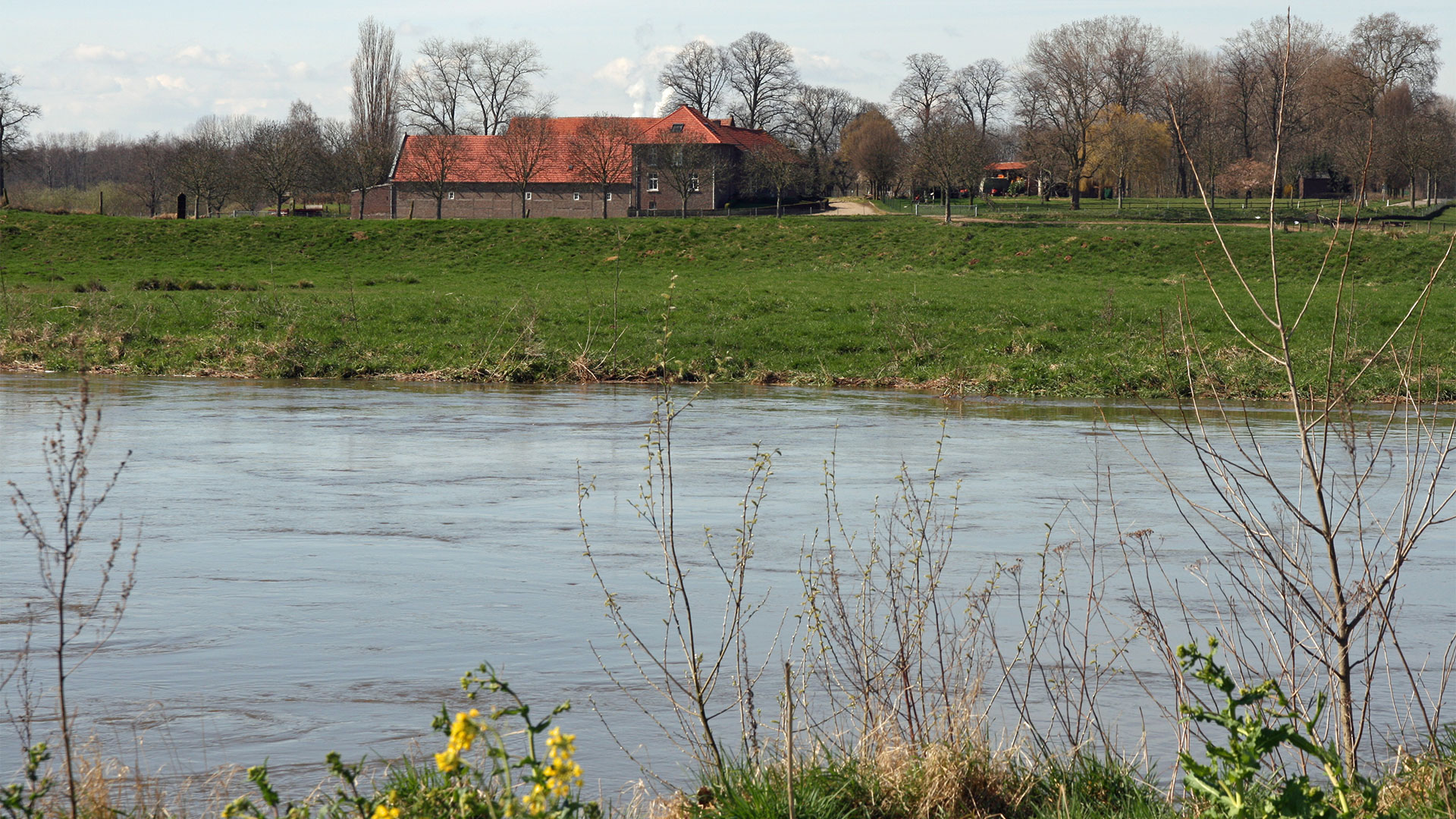Flow prediction model Rur river

By using machine learning, we identified complex patterns and relationships between precipitation, groundwater levels and water flows from historic data. The model uses these parameters and more to forecast flow levels 16 hours into the future, and feeds this information directly into the water authority’s existing FEWS systems.
Project facts
- ClientsWaterschap Limburg
- LocationNetherlands
- ChallengeThe water authority engaged Royal HaskoningDHV Digital to help it model and forecast the potential discharge of the River Rur near Stah, so it could better understand and anticipate higher peaks and surges. The model had to combine data science and machine learning techniques with expert hydrological knowledge, to create reliable, actionable insights that the water authority could be totally confident in.
- SolutionWe created a linear regression prediction model using historic discharge, precipitation, and precipitation surplus data, combined with knowledge about interactions between drought and precipitation from 2010 onwards. This resulted in a model which can accurately forecast the peak flow of the river at least 16 hours in advance.
- DateJul 2020 – Oct 2020
Key take-aways
The challenge
Building a predictive model with limited data
The river Rur is an important river for the Limburg Water authority. But a unique combination of storage capacity and precipitation issues, and complex dependencies shared with neighbouring German water authorities, mean that its flows are very difficult to model through traditional hydrologic approaches.
To help overcome that challenge, the water authority asked RHDHV Digital to develop a new peak flow prediction model, based on a combination of data science and machine learning techniques, and its expert hydrological knowledge.
The water authority wanted to be able to accurately forecast peak flow levels up to 24 hours into the future. That meant the model needed large volumes of reliable data on peak flow events in order to be trained effectively.
While there was data dating back to the early 2000s, the data from 2000 to 2010 contained several incomplete time series. So, the decision was made to train the model using our most complete event data sets – those created from 2010 onwards.
The solution
Machine learning and hydrological knowledge combined
We created a linear regression prediction model that combines historic discharge, precipitation, and precipitation surplus data with knowledge about interactions between drought and precipitation from 2010 and onwards.
To ensure the relationships and patterns considered by the machine learning model deliver reliable output, we thoroughly analysed how the area of the river functioned from a hydrological perspective and selected data based on this analyses. This enabled us to formulate valuable prediction features, and assure reliability when they were implemented.
We utilised a Scrum methodology to execute this project, enabling the client to stay actively involved in the process and use their hydrology expertise to ensure that all data being used to train the model was of high quality.
Working closely with the client team, we defined, reviewed and refined four sprints for the project:
- Analysis and definition of the challenge, available data, water system, system requirements for implementation and acceptance requirements.
- A first iteration of the model was developed and discussed with the stakeholders (hydrologists, crisis team representatives and data scientist of the water authority) during
- which next steps and improvements were determined.
- Finalisation of the prediction model using input from the previous sprint review session in order to meet the defined acceptance criteria.
- Implementation of the final peak flow prediction model in the water authority’s FEWS system together.
This resulted in a model that can accurately forecast the peak flow of the river Rur near Stah at least 16 hours in advance, at a 90 percent confidence interval.
The result
Enabling earlier flood warnings
The result of the project was a prediction model that could accurately predict peak flows (100m3/s) up to 16 hours in advance. This prediction model is now used as an early warning system in potential crisis situations.It also functions as an additional source of input for hydrologists when providing information about potential floods to internal and external stakeholders. When a flood situation is predicted, hydrologists can use the analysis to advise the crisis response team, and ensure that the right actions are taken immediately.
With this data-driven model Waterschap Limburg can better anticipate on potential floods. The predictive model gives us more time to take measures to prevent or limit nuisance.
Digital Twins for Wastewater Infrastructure

Anything we can help with?
Have a question, comment or business enquiry? Talk to one of our experts to see how we can help.